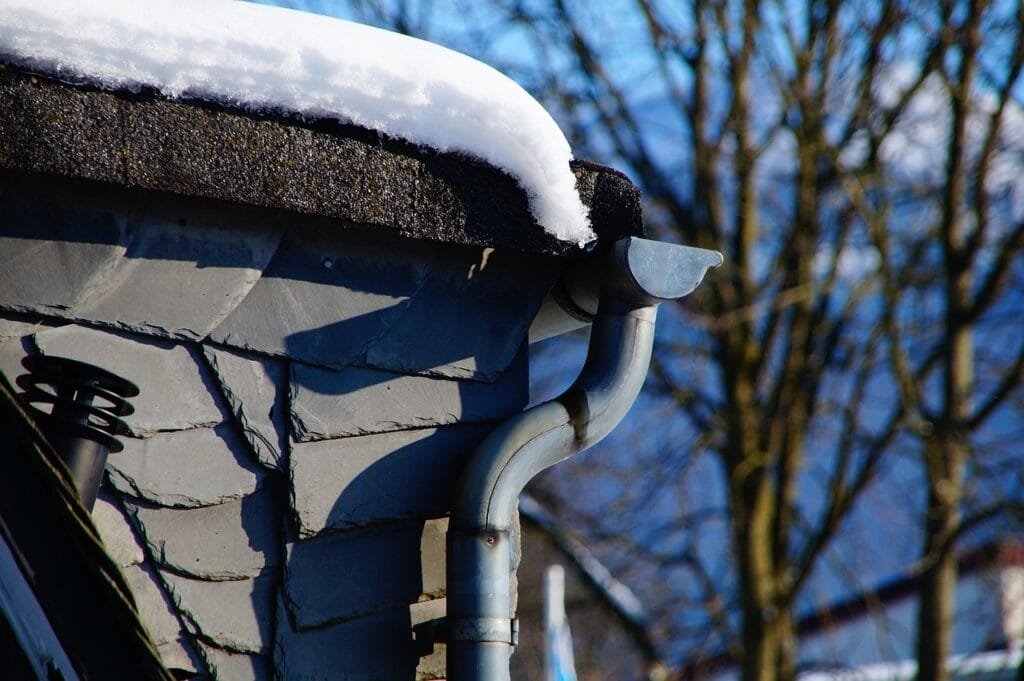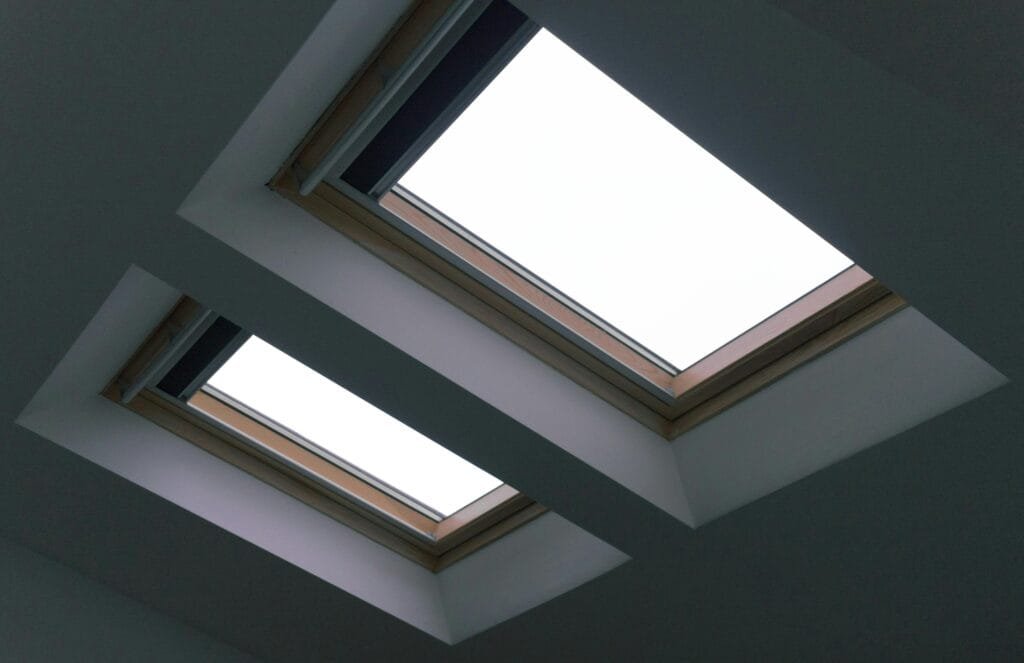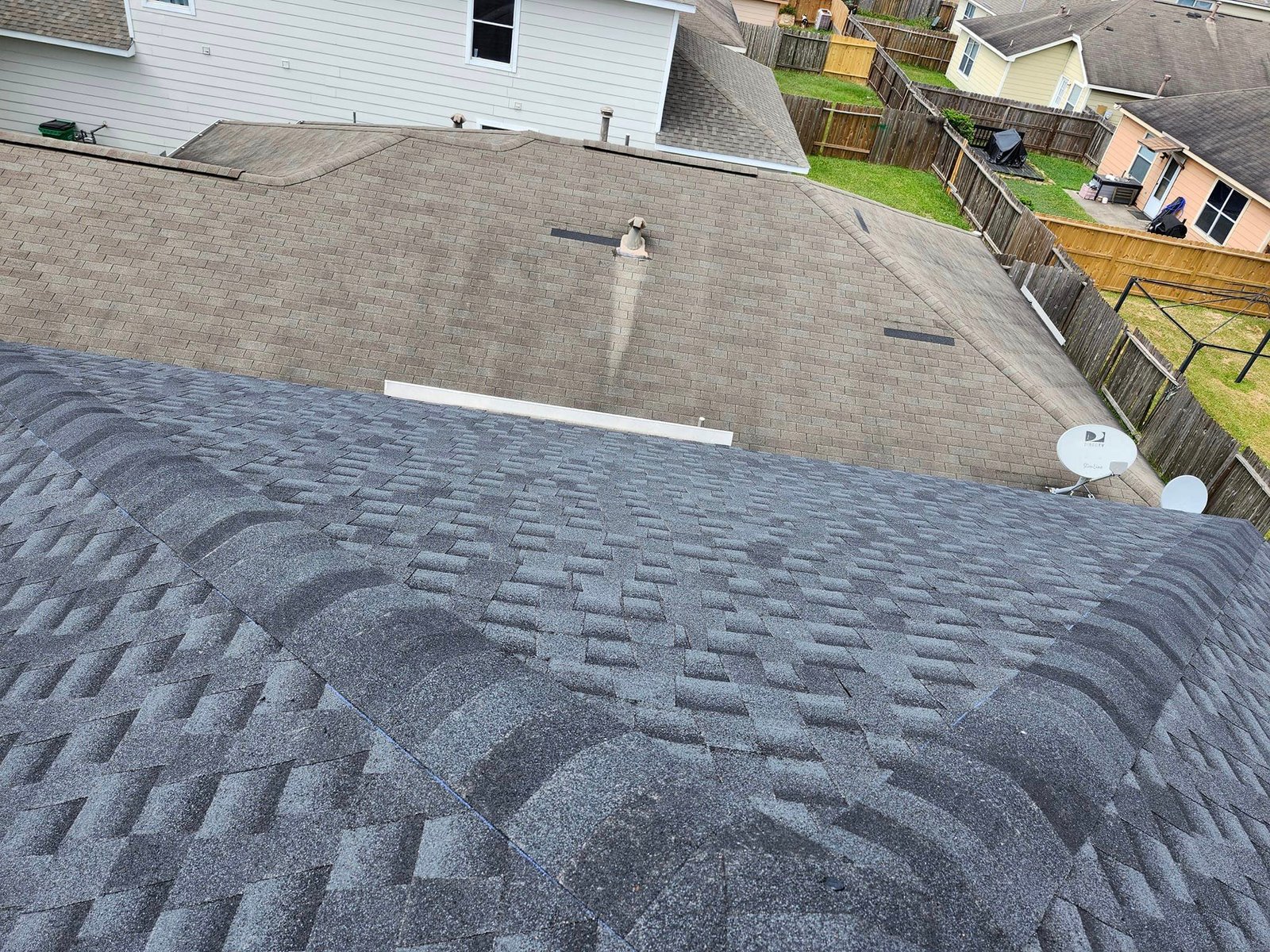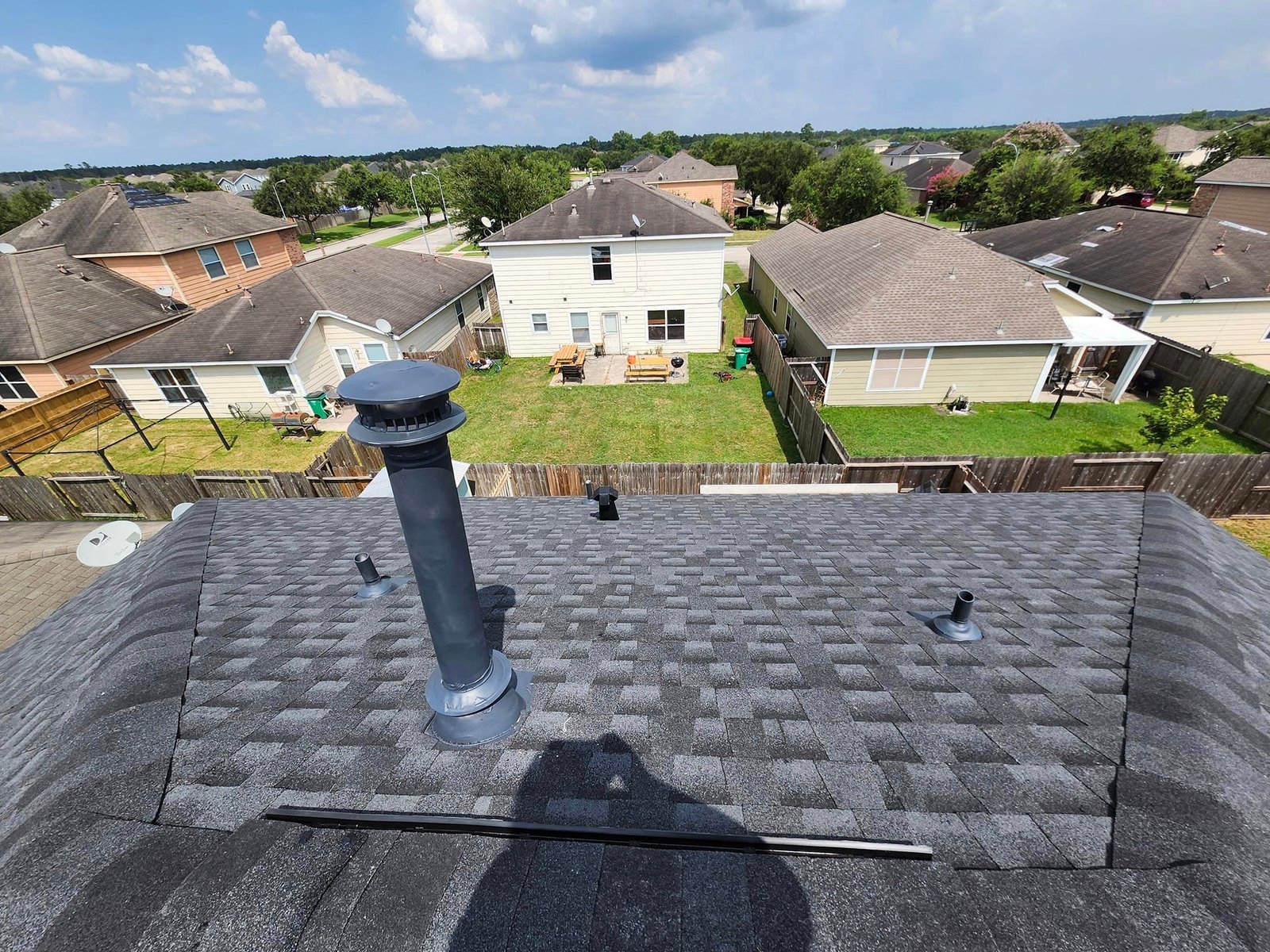Your roof does a lot more than keep you dry; it’s a protective barrier, a temperature moderator, and even a design statement for your home. In Texas, roofs and their accessories face a particular set of challenges—from intense sun and heat in the summer to unexpected storms and occasional freezing weather. So, when it comes to making sure your roof accessories like gutters, flashing, and skylights are well-maintained, it’s essential to know how long they’re expected to last, what factors affect their longevity, and how to recognize when they need a bit of attention.
1. Gutters: Moving Rain Away from Your Home’s Foundation
Gutters are the quiet workhorses of your home, diverting rainwater safely away from your foundation. This protects against water damage, soil erosion, and foundation shifts.

Typical Lifespan of Gutters
The durability of gutters varies by material:
Aluminum Gutters: Popular due to their resistance to rust, aluminum gutters generally last 20 to 30 years when maintained.
Steel Gutters: Known for durability, steel gutters can last 20 to 30 years but may rust over time if not kept in good condition.
Copper Gutters: An upfront investment, copper gutters can last 50 years or more and develop a unique patina that adds character.
Vinyl Gutters: Budget-friendly but susceptible to warping or cracking in extreme heat, vinyl gutters last around 10 to 20 years.
Factors That Affect Gutter Durability
Certain conditions can reduce the lifespan of gutters:
Sun and Heat: Metal gutters expand and contract with fluctuating temperatures, which can strain joints and seams over time.
Routine Maintenance: Regularly clearing gutters of debris prevents clogs and overflow, which can lead to water damage.
Proper Installation: Gutters that are securely installed and aligned will resist sagging and perform more efficiently.
Signs Your Gutters May Need Replacement
Catching early signs of gutter wear can save you costly repairs down the road:
- Rust spots or corrosion on metal gutters
- Water pooling around the home’s foundation
- Gutters pulling away from the structure or showing signs of sagging
- Cracks or breaks, especially common in vinyl gutters
2. Flashing: Shielding Vulnerable Spots from Water
Flashing is thin metal sheeting placed around edges and joints on the roof, like valleys, chimneys, and vents, to guard against leaks. Its role is crucial in keeping water from entering your home.
How Long Flashing Typically Lasts
Flashing can last 15 to 30 years, depending on the type of metal used:
Aluminum Flashing: Common and affordable, aluminum lasts around 15 to 20 years but can be less durable in high-heat conditions.
Galvanized Steel Flashing: With good resistance to wear, steel flashing can last 20 to 30 years.
Copper Flashing: High-quality and long-lasting, copper flashing can endure 50 years or more, requiring little maintenance.
Factors That Impact Flashing’s Durability
The longevity of flashing can be affected by:
Weather Extremes: Exposure to hot-cold cycles causes metal to expand and contract, which can lead to cracks over time.
Material Choice: While copper and steel tend to be durable, aluminum may need more frequent inspection.
Installation and Maintenance: Poorly installed flashing is prone to leaks and damage. Routine checks, particularly after strong weather, help prevent serious issues.
When to Consider Replacing Flashing
Here are some indicators that flashing might need attention:
- Rust or cracks along the metal
- Loose pieces or visible gaps
- Water stains or peeling paint near flashing points inside the home
3. Skylights: Brightening Your Home Naturally
Skylights add a touch of sunlight to any room, making it feel more open and bright. But as part of the roof, they endure similar challenges from the elements.

Average Lifespan of Skylights
Most skylights are built to last 15 to 30 years depending on the material:
Glass Skylights: Durable and often with UV-protective coatings, glass skylights generally last 20 to 30 years.
Plastic Skylights: Made from acrylic or polycarbonate, plastic options usually last around 10 to 20 years and are budget-friendly, though they may scratch or discolor more easily.
Factors Influencing Skylight Durability
Several factors affect how long skylights hold up:
UV Exposure: Sunlight can cause plastic skylights to fade or become brittle, while glass skylights with UV coating handle it better.
Temperature Variations: Hot-cold cycles can strain skylight seals, leading to condensation or leaks.
Moisture Control: Poorly vented skylights that trap condensation can have moisture-related problems.
Installation Quality: Skylights installed correctly have a far lower risk of leaks or issues.
When to Replace Your Skylight
Be aware of these signs to catch skylight problems early:
- Condensation between double-glazed panes
- Water stains on walls or ceilings near the skylight after rain
- Cracks in glass or discoloration in plastic skylights
- Persistent fogging or cloudiness in the skylight
Tips for Extending the Life of Gutters, Flashing, and Skylights
With proper maintenance, you can maximize the lifespan of these roof features. Here’s what can help:
Annual Inspections: Have a professional inspect the roof and its components at least once a year, especially before summer or after severe weather.
Quick Repairs: Fixing minor issues, like loose flashing or small gutter leaks, helps avoid costly damage.
Routine Cleaning: Gutters should be cleared of debris twice a year to prevent clogs and water overflow.
Invest in Quality Materials: When replacing parts, choose durable materials designed to withstand the local climate, like UV-resistant glass for skylights or copper flashing.
Final Thoughts: Caring for Your Roof Add-Ons
The extras around your roof are essential to keeping your home safe and efficient. From redirecting water to adding light, each of these components—gutters, flashing, and skylights—does its part. By performing regular maintenance, keeping an eye out for wear, and choosing high-quality materials, you can ensure these vital elements stand the test of time and keep your home protected for years to come.




Comments are closed.